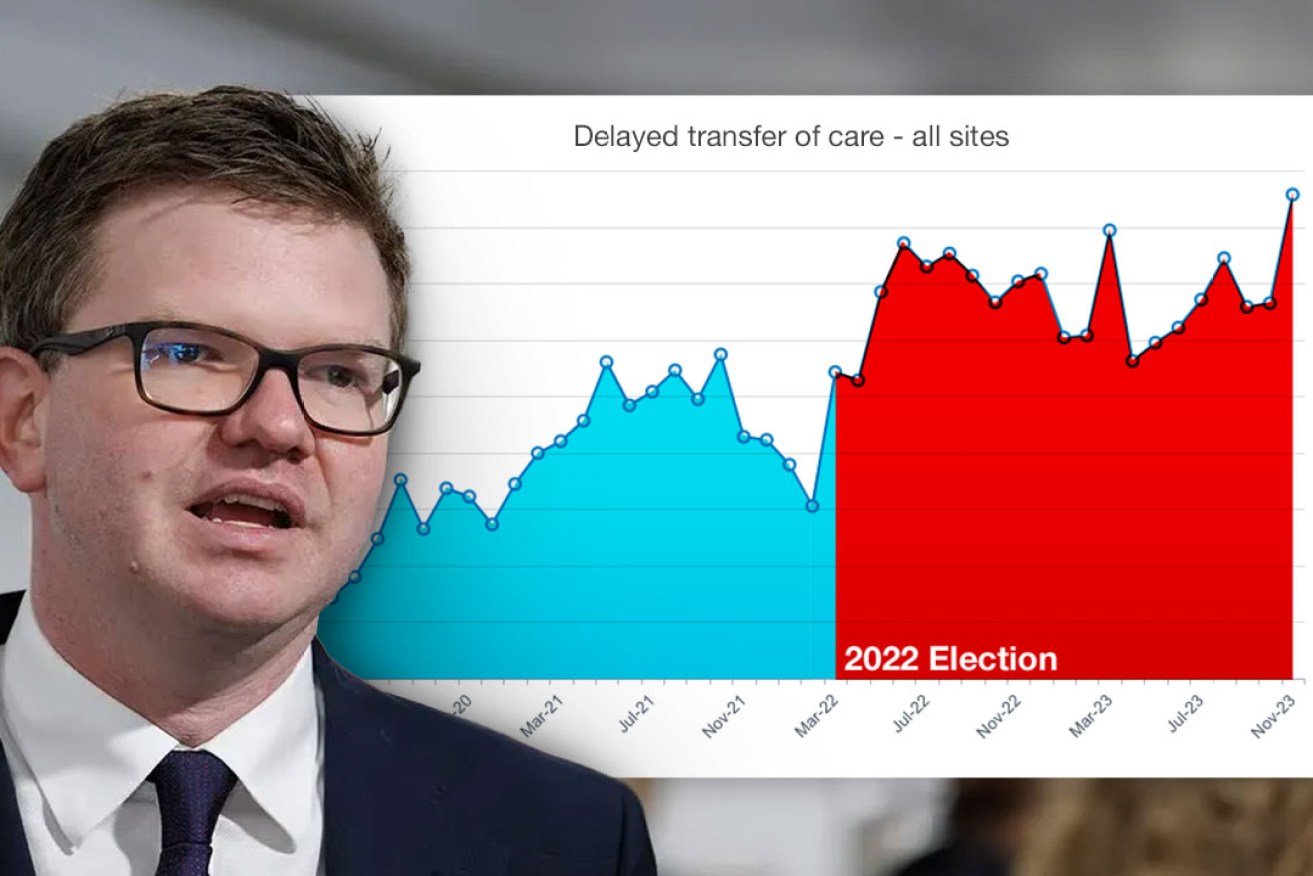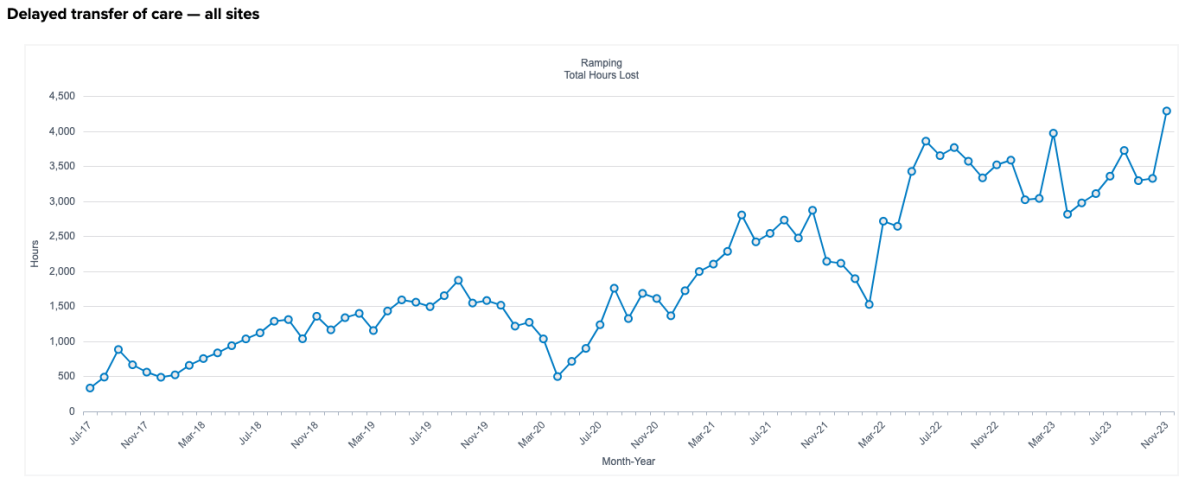SA hits new ambulance ramping record
Ambulances spent a record 4285 hours – equivalent to 178 days – ramped outside South Australian hospitals in November, with the Health Minister calling the figure “very disappointing”.


Health Minister Chris Picton said today there was "no spinning" the latest ramping results.
The state government this morning released November figures showing that ambulances spent 4285 hours outside hospital entrances waiting to admit patients, eclipsing the previous record of 3968 hours in March this year.
November’s delayed transfer of care (TOC) figures are up 963 hours from October.

Delayed transfer of care statistics (ambulance ramping) spiked to a record in November. Source: SA Health
Health Minister Chris Picton attributed November’s result to problems with SA Health’s troubled electronic medical records system, Sunrise EMR, as well as an increase in COVID presentations.
But he also conceded the November figures were “very disappointing” and there was “no spinning the results”.
“This is not about excuses but there are some explanations in relation to November,” he told reporters.
“We did see a significant uplift in terms of COVID presentations.
“That has an impact in terms of additional pressure, but it also has an impact in terms of the steps that staff need to take in terms of managing COVID patients and also the absence of staff when people are off sick with COVID themselves.
“But ultimately, we need the capacity in our system to manage those COVID peaks because they are going to continue to happen.”
SA Health will conduct a review – expected to take around 90 days – of the Sunrise EMR system.
Picton said the Sunrise system was contributing to blockages in emergency departments. On days when it is not working properly, ramping time is on average 36 per cent higher, according to SA Health.
“We have now seen… that the issues that are happening in terms of the EMR, particularly when we see blockages and shutdowns in that system… causes increases in terms of ramping,” he said.
“That inefficiency we see in that has a real-world impact in terms of patients.”
Labor made health the central issue of its 2022 election campaign, with then Opposition leader Peter Malinauskas promising to “fix the ramping crisis”, while the ambulance union campaigned against the Marshall Government.
The Opposition seized on the latest figures today, saying they were “almost three times worse than the former Liberal Government’s last full month in office”.
“Peter Malinauskas’ number one election commitment was to fix ramping – but here we are, almost two years later, and we’ve hit more than 4,000 hours lost to the ramp for the first time in our state’s history,”said Liberal health spokesperson Ashton Hurn.
“This unprecedented crisis is the equivalent of almost half a year lost on the ramp outside our emergency departments in just a single month.
“This is a shameful milestone for South Australia’s healthcare system and the Malinauskas Labor Government.”
Picton’s office said the Malinauskas Government had so far committed $4.3 billion extra to the health system.
Asked how he could assure the public the government would fulfil its health election commitments, Picton said: “Because we said that it would take four years to do, and that’s because it takes time to build additional hospital beds, which is the key thing that we need.
“The key blockage in the emergency department is people who are in an emergency department bed but are waiting for a bed elsewhere in the hospital system,” he said.
“That reduces the capacity of the emergency department, makes it harder to bring in people from the ramp, makes it harder to get ambulances to respond on time.”
Picton said the performance of ambulances has improved since Labor has come to government “because we’ve been able to quickly put in place additional ambulances”.
“You can’t quickly build additional hospital beds, that does take time to do – we’re doing it as fast as possible,” he said.
Picton said 150 additional hospital beds would be coming online next year as part of a commitment to add 550 across the system.
Despite the increase in ramping, ambulance response times for priority one incidents – needing an ambulance within eight minutes – marginally improved.
The percentage of priority one callouts to receive an ambulance within eight minutes was 61.8 per cent, up from 61.5 per cent. The benchmark is 60 per cent.
But the percentage of priority two callouts that were met within the designated timeframe (16 minutes) dropped to 53.5 per cent in November, down from 58.8 per cent.
The government said before the election they wanted 85 per cent of priority two callouts arriving on time. SA Health’s dashboard is targeting 90 per cent.




